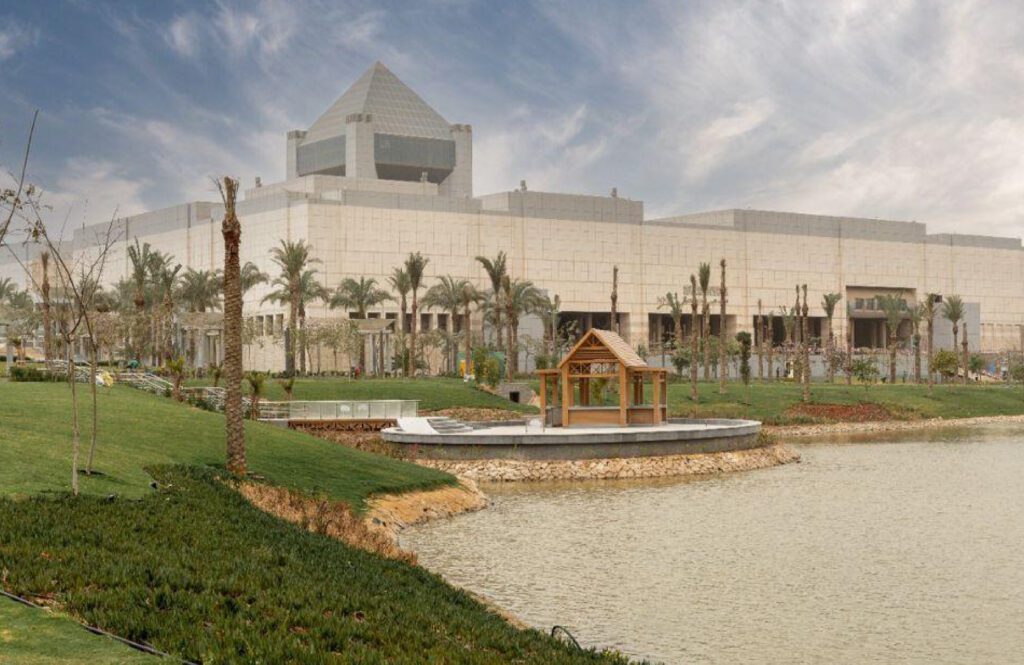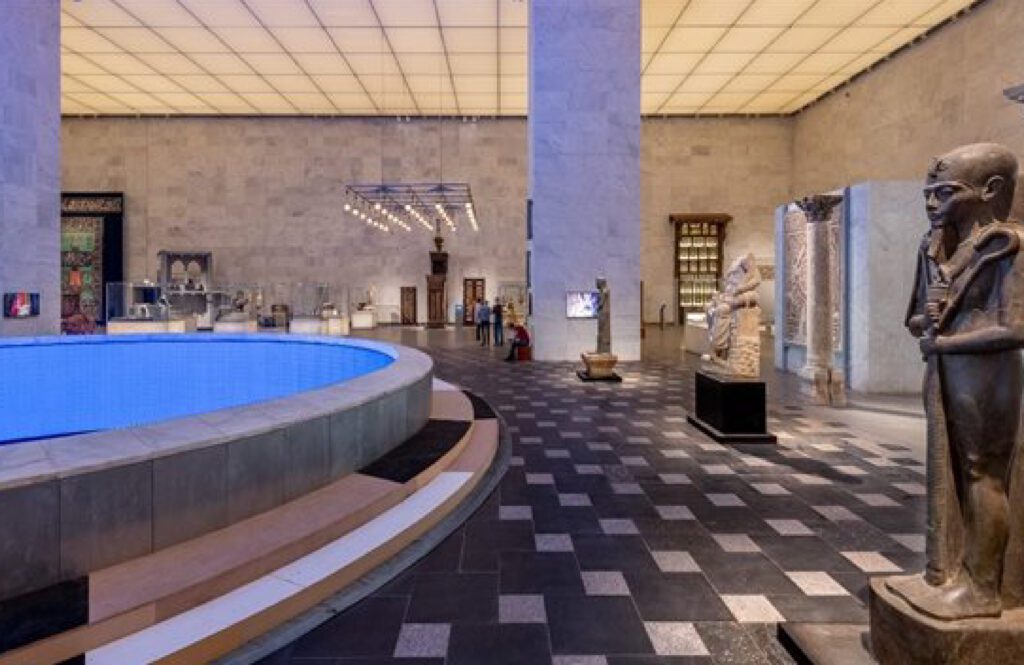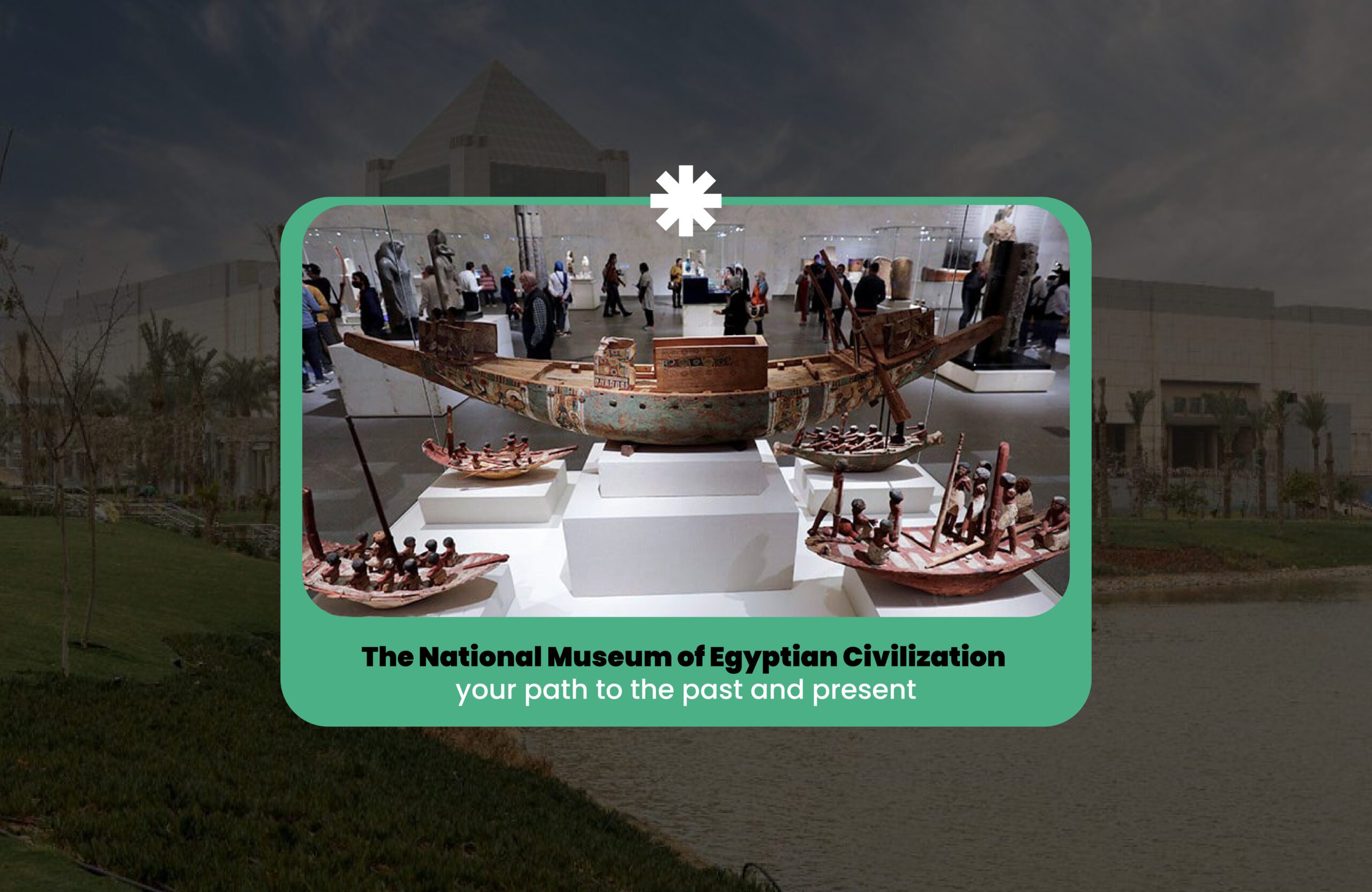The National Museum of Egyptian Civilization aims to showcase and celebrate Egypt’s diverse and significant cultural heritage. Through various cultural, artistic, and scientific exhibits, the museum seeks to provide visitors with a vibrant and engaging context to explore and understand the country’s rich history. The institution hopes to strengthen the bonds between people and their shared human past by fostering a deeper connection between visitors and the museum’s exhibitions. With its wide-ranging collection and innovative programs, the National Museum of Egyptian Civilization offers a unique and enlightening experience for all who visit.
Board members of The National Museum of Egyptian Civilization :
- Dr. Ahmed Essa Taha, Minister of Tourism and Antiquities
- Dr Hala Helmy, Minister of Planning and Economic Development, Chairman of the Board of National Investment Bank
- Mr Moustafa Waziry, Secretary-General of the Supreme Council of Antiquities
- Mr Amr El Kady, Chief Executive Officer of the Egyptian Tourism Promotion Board
- Mr Hesham Okasha, Chairman of the Board of Directors of the National Bank of Egypt
- Mr. Ayman Soliman, Executive Director of Egypt’s Sovereign Fund
- Mr. Ahmed Al-wassef, Chairman of the Board of Directors of the Egyptian Union of Chambers of Tourism
- Counselor Hazem Lami, Legal Counselor of the Minister of Tourism and Antiquities

The National Museum of Egyptian Civilization, a one-of-a-kind cultural complex, is nestled in the heart of Old Cairo, the oldest Islamic capital in Africa. It’s a pioneering institution in Egypt and the Arab world, offering a captivating journey through history, unveiling the fascinating story of the successive Egyptian civilizations.
The museum’s inception was a momentous occasion initiated by the United Nations Educational, Scientific and Cultural Organization (UNESCO) in response to the Egyptian government’s request. This international campaign, announced in 1982, aimed to establish the Nubia Museum in Aswan and the prestigious National Museum of Egyptian Civilization in Cairo. The foundation stone was laid in 2002, following the victory of an Egyptian architect in an international architectural competition.
Construction of the museum was delayed for several years until it was finally completed, in 2017 and a temporary exhibition hall on Egyptian crafts from different ages was opened. The exhibition highlighted four crafts: pottery, woodwork, textiles, and jewelry, and it was attended by the former UNESCO Director-General Irina Bokova.
The main exhibition hall received 22 royal mummies moved from the Egyptian Museum in Tahrir Square in a grand procession in 2021. A hall for Egyptian textiles was also opened in 2022.
The museum’s collection is a valuable assemblage of historical artifacts, each a window into Egypt’s rich and diverse heritage. These artifacts, spanning from prehistoric times to the contemporary period, illuminate the various epochs of Egyptian civilization, including the ancient Egyptian, Greek, Roman, Coptic, Islamic, and modern periods. They provide a tangible and intangible connection to Egypt’s past, fostering a deeper understanding of its culture and history.
The museum includes a hall for mummies and a hall for Egyptian textiles. The mummy hall displays the mummies of the pharaohs and their queens and the mummies of other prominent figures from ancient Egyptian history. The Hall for Egyptian Textiles showcases the rich tradition of weaving and textiles in Egypt, from Pharaonic times to the present.
In addition to its exhibitions, the museum has hosted the Egyptian Civilization School since September 2022. The school aims to increase citizen awareness and introduce foreign residents to ancient Egyptian civilization. It offers courses and workshops on various aspects of Egyptian civilization, including history, art, language, and culture.
The Grand Egyptian Museum A Journey Through Time
Location of The Museum:
Highlights of the National Museum of Egyptian Civilization:
- Granite statue of King Thutmose III
- The wooden coffin of King Ramses II was discovered in the Deir el-Bahari cache in Thebes in 1881.
- Nejim Ankh’s coffin was recovered from the Metropolitan Museum. The coffin was made of Cartonnage and covered with gold foil; during the Ptolemaic period
- Senndjem Sarcophagus was retrieved from his tomb located in Deir al-Madina. This event occurred during the New Kingdom period in the Nineteenth Dynasty.
- Belt of Prince Ptah-Shepses made of gold, red carnelian, and volcanic glass. Date: Old Kingdom, Dynasty 6, ca. 2323-2150.
- Gold and lapis lazuli bracelets of King Ramesses II
- Dynasty 18, reign of King Ramesses II, ca. 1279–1213 BC, was discovered in Tall Basta, Eastern Delta.
- A glass lantern with a Quranic scripture on its neck and an inscription in blue enamel mentioning Sultan Hassan from the Sultan Hassan School.

Available shops and halls in The National Museum of Egyptian Civilization:
The National Museum of Egyptian Civilization (NMEC) is a unique destination offering a delightful array of handpicked shops where visitors can discover unique handicrafts and souvenirs. The museum is ideal for unique souvenirs such as food and beverages, accessories, cosmetics, handicrafts, and souvenirs.
Food and Beverages:
Visitors can enjoy delicious food and beverages at the museum’s cafes, such as Brioche Doree, Abu Auf, and Happiness Maker. These cafes offer a wide range of options that cater to different tastes and preferences.
Children’s Area:
The museum has a dedicated area for children to play and learn about ancient Egyptian history. The Kimet playing area is designed to provide kids with a fun and educational experience.
Accessories and Cosmetics:
NMEC offers a range of accessories and cosmetics inspired by ancient Egyptian culture. Visitors can shop for unique items at Nefertari, GMJ Accessories, Konouz, ABEIS Handmade Masterpieces, and Bes.
Theater:
NMEC has a 487-seat theater that is available for private rent. It provides:
- A multi-use space to host artistic and cultural events.
- Making it an ideal venue for performances.
- Conferences.
- Other events.
Meeting Room:
The museum’s meeting room can accommodate up to 30 attendees and is ideal for board meetings. It is also available for private gatherings, offering a flexible and convenient space.
Lecture Hall:
NMEC’s lecture hall has a spacious capacity of 187 and is a hub for various cultural events. It is an ideal venue for seminars, workshops, and lectures.

Cinema Hall:
The museum’s cinema hall has a spacious capacity of 187 and is an ideal venue for film screenings and other cultural events.
Roman Theater:
NMEC’s outdoor Roman theater is set against the backdrop of the Dye House and can seat up to 300 spectators. It serves as the stage for cultural events and is also available for private events, adding a touch of grandeur to special occasions.
Gift Shop:
The museum’s gift shop is on the main floor and offers a curated selection of Egyptian souvenirs and handicrafts. Visitors can take a piece of Egypt’s heritage home with them.
Temporary Exhibits:
NMEC has a section in the Textile Gallery designated for temporary exhibits and private events. The section has six display cases and is ideal for showcasing temporary exhibits and other events.
NMEC offers visitors a unique and delightful experience. The museum’s handpicked shops, dedicated areas for children, and various cultural venues make it an ideal destination for unique souvenirs and an immersive cultural experience.
Past Events That took place in The National Museum of Egyptian Civilization

Tablyat Misr:
(February 19, 2023) and (February 15, 2024)
The National Museum of Egyptian Civilization (NMEC) has launched a new initiative called “Tablyat Misr” to promote and document Egypt’s traditional cuisine. The initiative aims to showcase the most prominent dishes typically served on a round dining table called a “Tablyat.” In ancient Egyptian philosophy, the table’s roundedness symbolizes eternity, which means that sitting around the “Tablyat” signifies that all Egyptians, despite their backgrounds, are bound together for eternity.
In its second season, the Tablyat Misr initiative aims to promote sustainability and reduce waste in Egyptian cuisine. It focuses on combating climate change through different agricultural seasons. One key goal of the initiative is to encourage people to grow their food, as it is a significant health, economic, and social aspect of Egyptian cuisine.
The Exhibition of Inspection trips on archaeological sites in Upper Egypt and the archives of Eduardo Toda:
(October 30, 2022)
The Egyptian National Museum of Civilization and the Embassy of Spain in Cairo jointly organized an exhibition of archival images titled “Inspection trips on archaeological sites in Upper Egypt and the archives of Eduardo Toda. Dr. Ahmed Ghoniem, CEO of the museum and Ambassador Alvaro Iranzo of Spain, inaugurated the exhibition. The exhibition showcases several photographs from the collection of Eduardo Toda y Güell, who served as the Spanish Vice Consul in Cairo between 1884 and 1886. These photographs document the work of Egyptian antiquities during the 19th century, offering a glimpse into the country’s rich cultural heritage.
Flamenco Concert in Collaboration with the Spanish Embassy:
(May 16, 2022)
NMEC collaborated with the Spanish Embassy in Cairo to organize a captivating artistic event featuring a flamenco performance. The renowned international dancer Annabel Veloso and her band presented the show. Annabelle Veloso is a distinguished Spanish artist who began her creative journey as a model and later attended the School of Flamenco (Amore de Dios). She has participated in specialized festivals and won several world art awards, gaining recognition as one of the most prominent creatives in the industry.
World Art Forum (WAF):
(January 19, 2022)
NMEC held the first edition of “The World Art Forum (WAF),” an international contemporary art event emphasizing the connection between modern art and the SDGs. The event aligns with Egypt’s 2030 Vision.
Book Signing by Dr. Bob Brier for The Luxor Obelisk and Its Voyage to Paris:
(October 13, 2021)
NMEC organized an event in partnership with AUC Press where Dr. Bob Brier, an Egyptologist and author, talked about his latest book, “The Luxor Obelisk and Its Voyage to Paris,” and held a book signing session.
The National Museum of Egyptian Civilization is valuable to Egypt’s cultural heritage. It allows visitors to explore Egypt’s rich and diverse history and is vital in promoting cultural exchange and understanding between Egypt and the rest of the world.
Take a moment to check the latest real estate offers in Egypt



